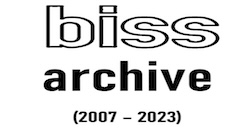We are happy to present the thirty-second issue of Belarus Foreign Policy Index, which explores Belarus’s foreign policy in the five key dimensions in the months of May and June 2016.
Belarus’s relationship with Russia can be characterized as constructive; however, in the media sector, the spirit of confrontation prevailed. The gas spat lingered, while the work to grant Belarusian-made products the status of “national” goods in the Russian market stalled. Furthermore, increasing numbers of new, targeted limitations were reported during the period. Belarus appeared to be having more claims to Russia within the framework of the Eurasian Economic Union (EEU).
Contacts between Belarus and the European Union showed a markedly higher level than before. Not only Foreign Ministry diplomats tend to represent the Belarusian side at bilateral meetings, which implies the gradual evolution of the relationship from the general political domain into more substantive sectoral formats.
The relations between Belarus and China were focused primarily on the potash issue. China made use of Belarus’s critical need for foreign exchange and made a very shrewd move in the global market for potash fertilizers in order to enjoy the most comfortable conditions.
In the “Developing World”, Belarus’s foreign policy efforts were distributed evenly between its main regions. This pattern, alongside the conspicuous level of contacts with “developing countries,” should be attributed to the improvement of the situation in other dimensions of Belarus’s foreign policy.
The Belarusian government is expanding the use of debt financing and other mechanisms to encourage export, and designated companies are promoting maintenance service networks for Belarusian machinery seeking to boost sales.
Although the Belarusian administration mentioned the Ukrainian issue only sporadically, the economic engagement between the two countries continued to develop quite extensively. Back at the start of the year, a new “trade war” came to an end, and new areas for economic collaboration were identified.
Read the full text of the thirty-second issue of Belarus’ Foreign Policy Index in PDF




